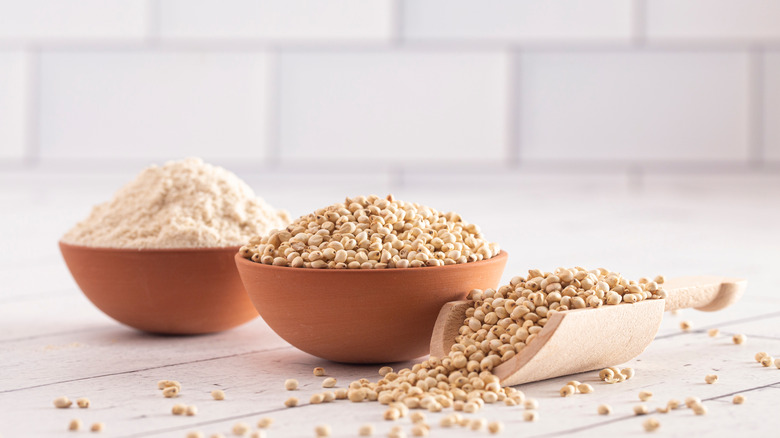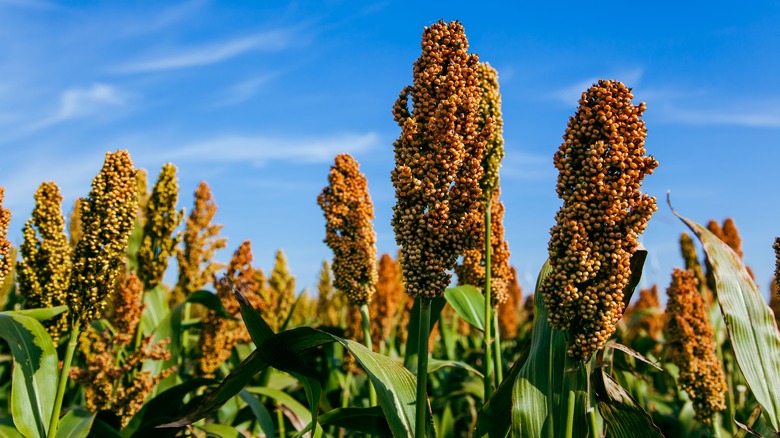Why Sorghum Is About To Be Used In US School Lunch Programs
If you've ever tucked into a bowl of farro, sunk a spoon into a beef barley soup, or sautéed up some quinoa fried rice, then you've already started to explore the world of ancient grains. A class of grains and grain-like seeds known as pseudocereals, according to Healthline, ancient grains including these and others such as bulgur, rye, and millet have been staples of the human diet for thousands of years, and have remained mostly genetically and agriculturally unchanged throughout the millennia. Boasting a more diverse and typically healthier nutritional profile than modern, genetically modified grain crops such as wheat and corn, ancient grains can be a delicious way to bring more vitamins, minerals, and fiber into your diet.
One less-common ancient grain that you might start to hear a lot more about these days is sorghum, a nutrient-packed, high-protein, gluten-free ancient grain that is well known in the American South as the principal ingredient in sorghum syrup, a sweetener that's typically poured over cornbread, biscuits, and hotcakes (via Southern Living). But the grain's appeal might soon spread beyond the South, as public schools across the nation add it to their school lunch programs based on a new recommendation from the U.S. Department of Agriculture.
Sorghum made it onto the USDA Food Buying Guide
If you've never tried sorghum, you might want to seek some out. This easy-to-grow, gluten-free grain is prized by chefs such as Evan Rich, Sam Kincaid, Dan Barber, and Alice Medrich, who have used it to create everything from sorghum-strewn chicken liver mousse to gluten-free granola to sorghum-infused grits. And though it's unlikely that American school children will be chowing down on dishes of this caliber, they are soon going to get to know sorghum in some form.
According to a press release published today by the United Sorghum Checkoff Program — basically a researcher and promoter of American-grown sorghum — the ancient grain was recently added to the USDA's Food Buying Guide for Child Nutrition Programs. The Buying Guide is what school foodservice directors primarily rely on to menu plan and purchase ingredients for meals that meet USDA nutrition requirements, meaning that the grain will be featured in school meals this fall when schools reopen.
The sorghum recommendation fits right into a new USDA requirement, announced on the first of this month, that at least 80% of the weekly grains in school lunches and breakfasts must contain whole grains (as opposed to refined grains). So in what form should school kids to expect to get to know sorghum? "In bowls, salads, soups, baked goods, and more," Sorghum Checkoff Director of Food Innovations & Institutional Markets Lanier Dabruzzi stated in the press release.

